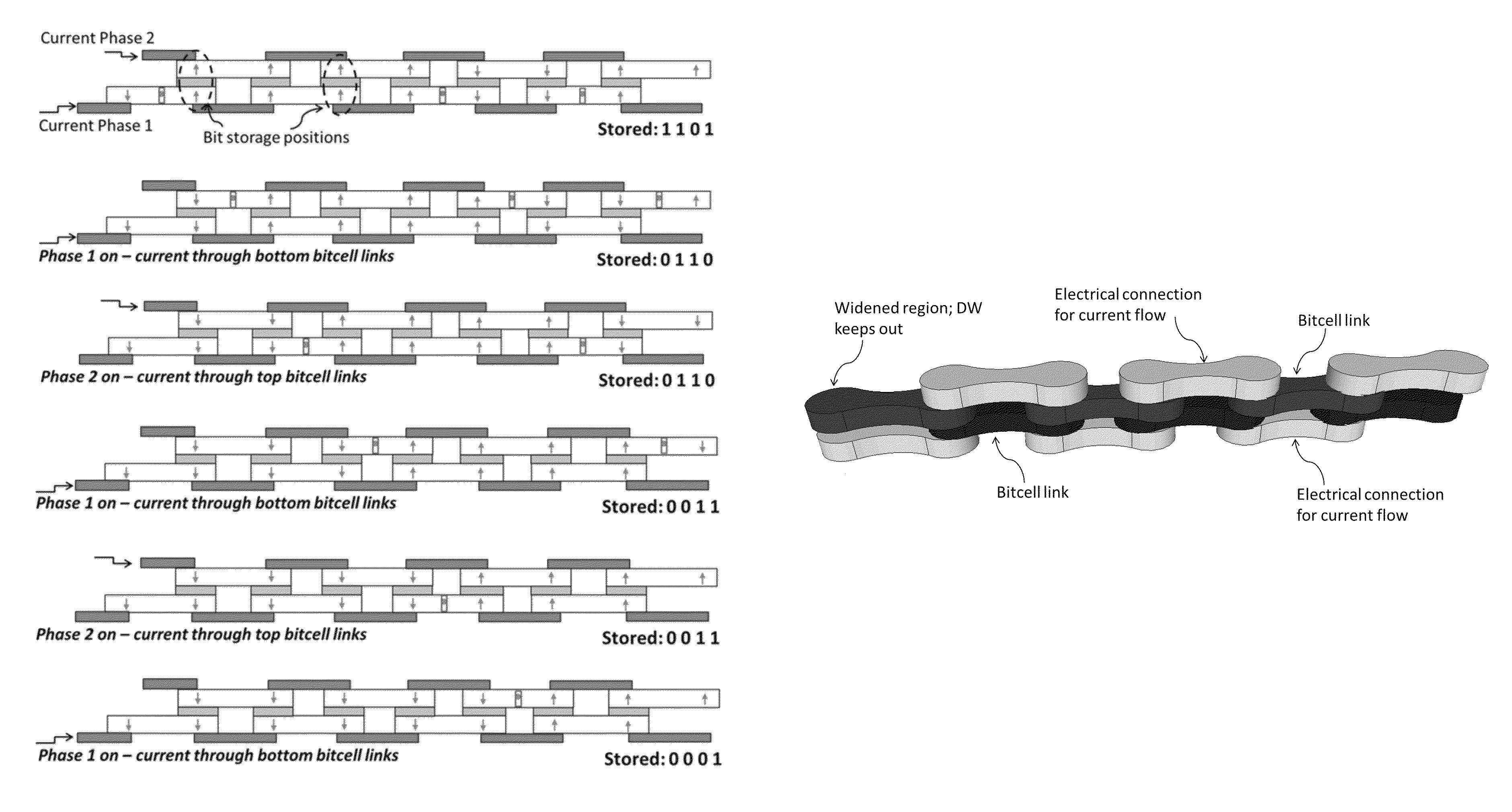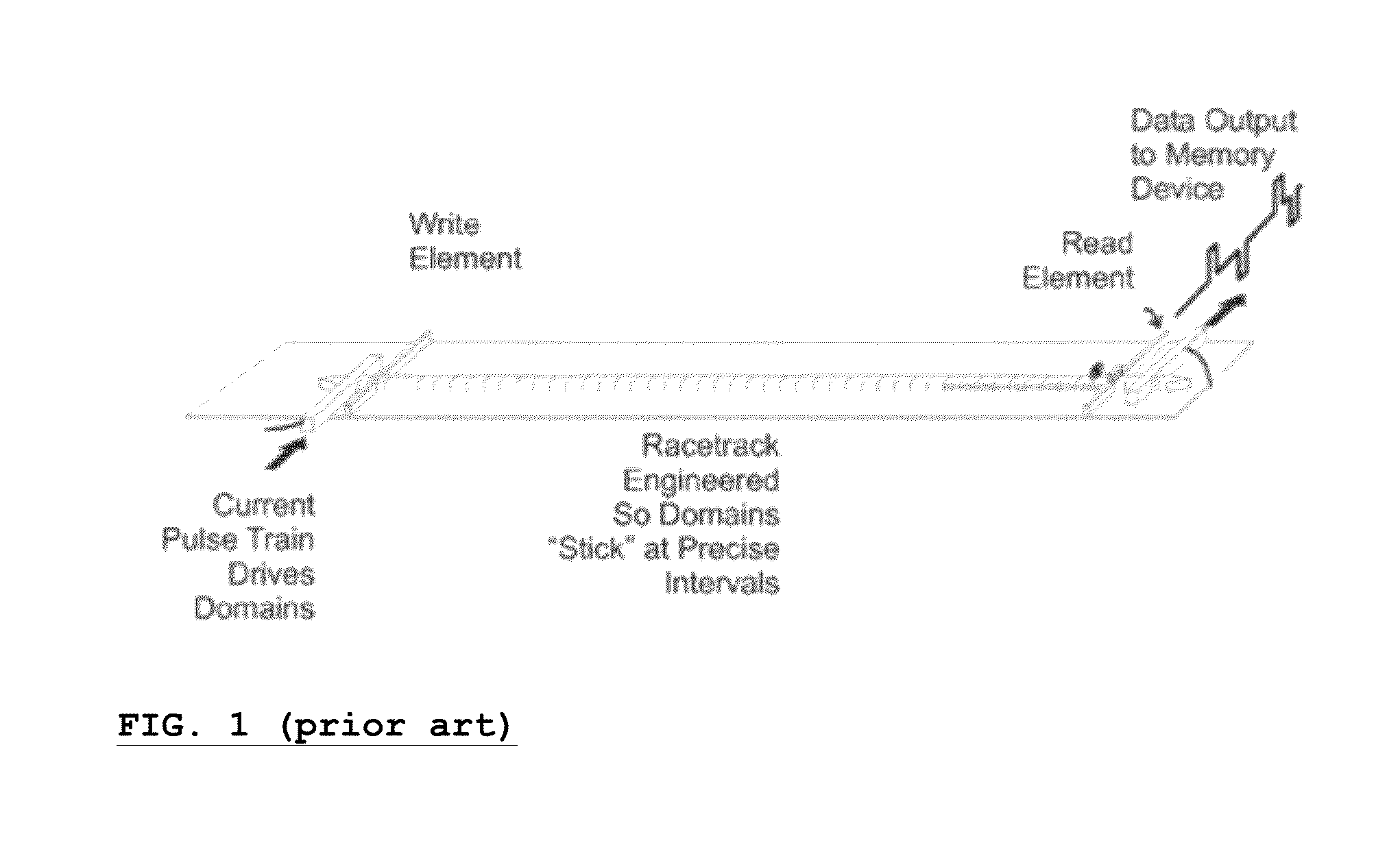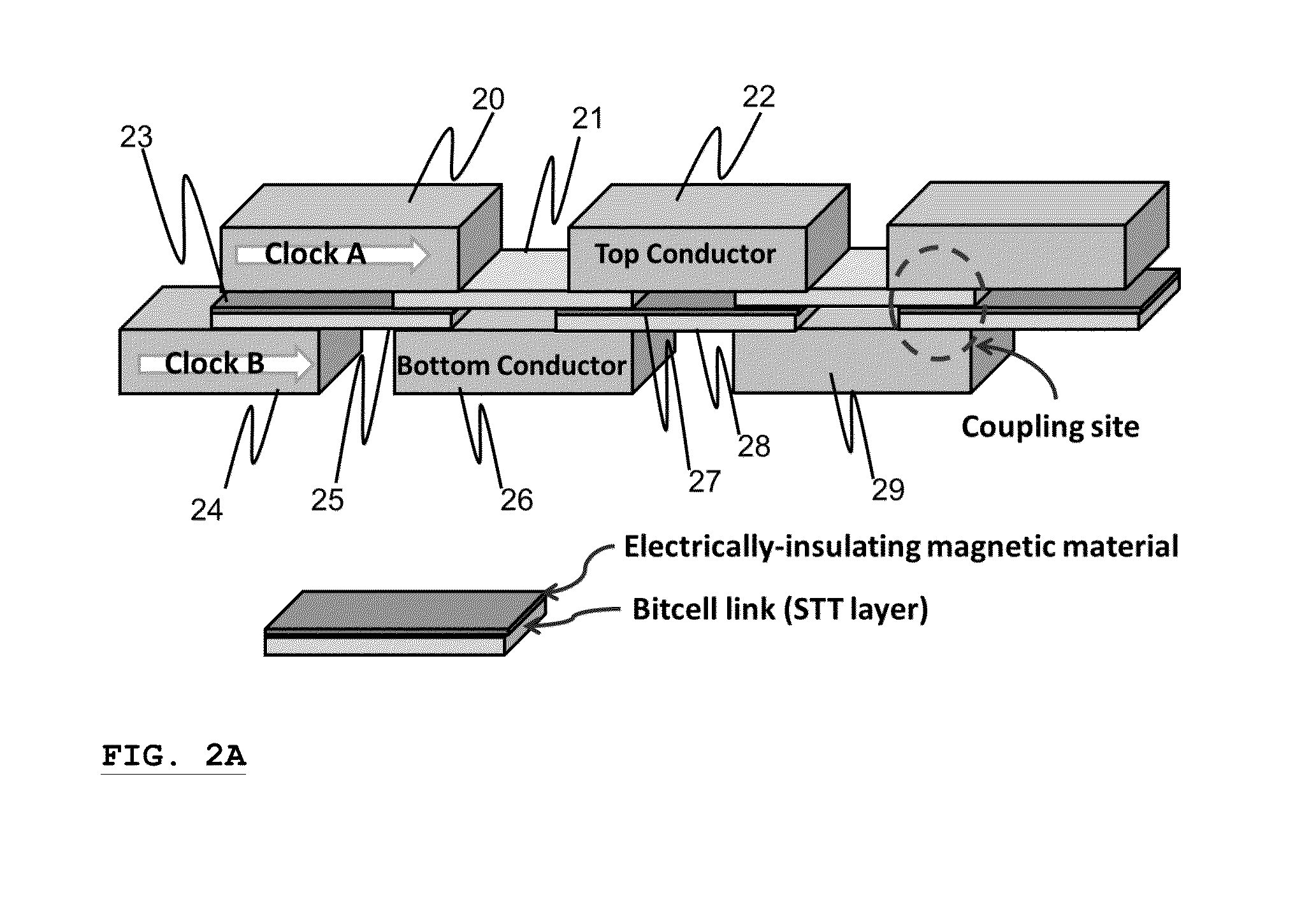Chainlink memory
a chainlink and memory technology, applied in the field of magnetic shift registers, can solve the problems of impeded commercial deployment today, prohibitively complex fabrication process, complicated control of racetrack memories,
- Summary
- Abstract
- Description
- Claims
- Application Information
AI Technical Summary
Benefits of technology
Problems solved by technology
Method used
Image
Examples
Embodiment Construction
Inventors' Lexicography
[0048]As used in this disclosure and the claims that follow, unless the context clearly demonstrates otherwise, the term “insulator” shall refer to a material or region whose principal function in the device or system is to prevent current flow across or through the material or region. In other words, the presence or possibility of some de minimis current flow across or through a material or region would not disqualify such material or region as an “insulator,” so long as the implicated current flow was not of a magnitude that would materially impede the material's or region's insulating function within the system or device. Other versions of the word (e.g., “insulate,”“insulates,” etc.) shall be similarly defined, unless the context clearly dictates otherwise.
[0049]As used in this disclosure and the claims that follow, unless the context clearly demonstrates otherwise, the term “couple” shall refer to an interaction between two or more elements with magnetiza...
PUM
 Login to View More
Login to View More Abstract
Description
Claims
Application Information
 Login to View More
Login to View More - R&D
- Intellectual Property
- Life Sciences
- Materials
- Tech Scout
- Unparalleled Data Quality
- Higher Quality Content
- 60% Fewer Hallucinations
Browse by: Latest US Patents, China's latest patents, Technical Efficacy Thesaurus, Application Domain, Technology Topic, Popular Technical Reports.
© 2025 PatSnap. All rights reserved.Legal|Privacy policy|Modern Slavery Act Transparency Statement|Sitemap|About US| Contact US: help@patsnap.com



